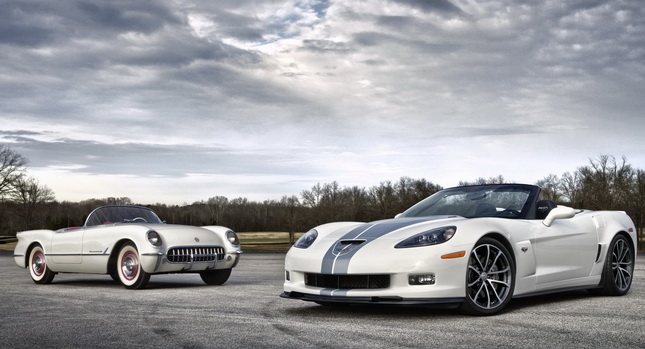One can argue that the horsepower game between sports cars manufacturers is really getting out of control. Proof, if any was needed, is the latest crop of supercars like the Ferrari F12berlinetta and the Lamborghini Aventador, to name just two, that have an output which, not so long ago, would be suited to a Formula 1 car.
And that’s without considering the likes of the Bugatti Veyron and the upcoming Ferrari F70 and Porsche 918 Spyder…
On the other hand, you can never have too much of a good thing – and more power means better acceleration and a higher top speed, which is certainly a good thing for gear heads.
The Corvette begs to differ. Not that anyone can accuse the only longest running sports car nameplate coming from the US to be short on power: the top of the range ZR1, after all, packs a 638HP V8 that helps it accelerate from zero to 60 mph in 3.4 seconds and top out at 205 mph.
It’s just that, for the last six decades, the people who have been developing and building the ‘Vette believe that low weight is just as important.
Case in point, the 2013 Z06. Its 505HP may fall short of some rivals, but its curb weight of 3,199 pounds (1,451 kg) means that it has a power-to-weight ratio of 6.33:1.
The 510HP Aston Martin DBS has a 7.5:1 ratio, the 530HP Porsche 911 Turbo S 6.7:1 and the mighty 545HP Nissan GT-R 7.1:1. That’s because they weigh 3,836, 3,561 and 3,887 pounds respectively.
“Horsepower isn’t the only measure of performance”, says Harlan Charles, Corvette’s marketing manager. “Balance and low weight are just as important and that’s where the Corvette excels. It has a heritage of employing cutting-edge technologies and materials to help optimize performance.”
It all began in 1953 and the first-generation Corvettes that were built with an all-fiberglass body. It was chosen by legendary GM designer Harley Earl because it was light, rustproof and economical since it did away with the need for metal stamping dies.
As the years passed and technology progressed, so did the materials used in the Corvette. From 1968, the third generation car’s bodywork was smoother due to the use of a die-cast tool for shaping the fiberglass and resin.
The big change, however, came in 1973. That was the year that pure fiberglass was replaced by sheet-molded composite, or SMC, which comprised of a reduced ratio of resin to fiberglass and included a catalyst formed under high pressure and heat.
SMC made the bodywork panels smoother and, as a result, the paint finish was improved. All Corvettes constructed since have an SMC body, though once again technology made it possible to alter its composition and make the panels stronger and, at the same time, thinner.
The norm is than almost all new cars weigh more than their predecessors do. However, the C5 Corvette that was launched in 1997, was in fact nearly 100 pounds lighter despite being longer and wider than the fourth generation model.
Not only were its panels very light, due to the use of more plastic than ever before, but the all-new chassis’ floorpan used high-strength rails and hydroformed sections to combine rigidity with low weight.
Even the small-block V8 contributed to the ‘Vette’s “diet”, thanks to its aluminum block (instead of the iron used in the C4) and heads, its composite intake manifold and an exhaust system made of titanium that was 70 percent (!) lighter than conventional systems.
The C6 Z06 in 2006 has the distinction of being, in GM’s own words, “the most significant advanced materials initiative” in Corvette history. Aluminum replaced steel as the chassis material, reducing its weight by one-third. Moreover, exotic materials like magnesium and carbon fiber were used in many areas further reducing weight.
The ZR1 took the Z06 principle to an even more extreme direction, a carbon fiber roof and rocker panels and standard carbon ceramic brakes, which are also optional in the Z06.
“Corvette has never been focused on an exclusive material – be it aluminum, carbon fiber, or fiberglass”, claims Corvette Executive Chief Engineer Tadge Juechter. “Instead, we are constantly looking for the best materials structure, powertrain, and chassis to improve the performance.”
PHOTO GALLERY






























